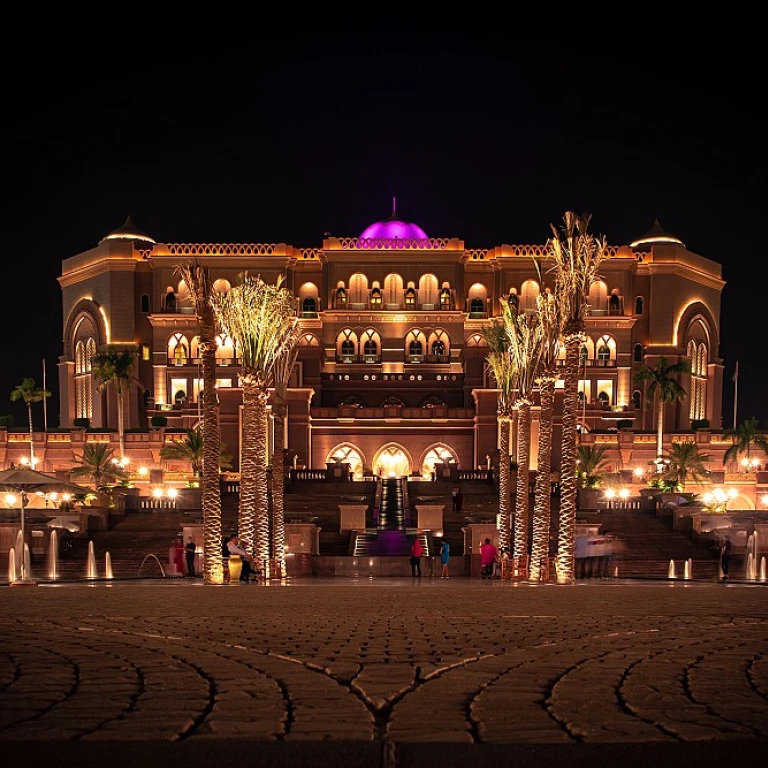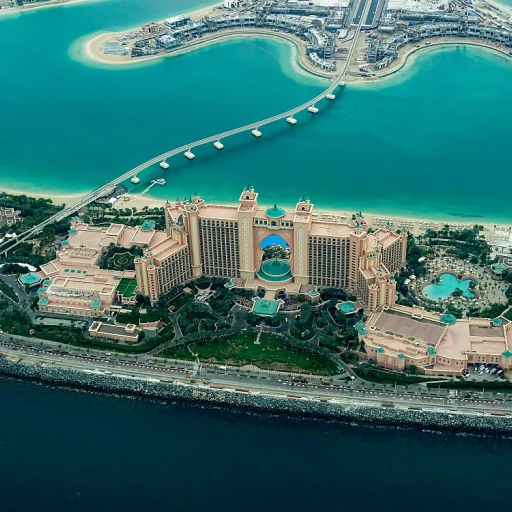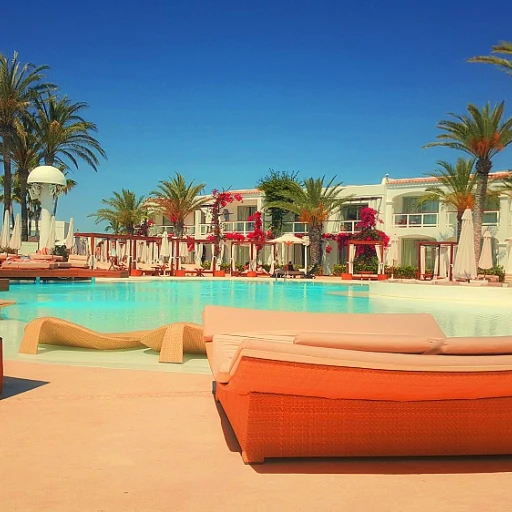The birth of Seattle's underground city
How it all began
Seattle, Washington, known for its iconic Space Needle and bustling Pike Place Market, also hides a fascinating secret beneath its streets. The Seattle underground city, a maze of subterranean passages, came into existence mainly due to the unique challenges and unfortunate incidents the city faced during its early development. The roots of Seattle's underground city are tied closely to the city's founding in the 1850s when settlers established a small community near Elliott Bay. However, this initial settlement, primarily made of wooden structures, faced constant flooding due to the area's high tides. The shifting ground and frequent fires also added to Seattle's woes, creating a unique set of challenges for the city's planners and residents. Despite these obstacles, Seattle quickly grew into a bustling port city.Engineer rains and the decision to raise the streets
One of the pivotal moments was the Great Seattle Fire of 1889, which devastated large parts of the city. The fire, starting in a cabinet shop, quickly spread, obliterating 25 city blocks. Enter a man named Reginald H. Thomson, the city engineer who played a significant role in the eventual rise of the underground city. Instead of rebuilding on the old, problem-plagued ground level, Thomson proposed that the city's streets be raised by a staggering 22 feet. The decision to elevate the city's streets was a monumental task but ultimately turned out to be the solution Seattle desperately needed. The buildings on Pioneer Square, initially built at ground level, became the first floors of the new buildings, and as the streets were elevated, these once-ground-level areas transformed into what we now know as the Seattle underground city.Turning problems into opportunities
The efforts to rebuild Seattle led to the fascinating and somewhat eerie underbelly of the city, turning misfortune into opportunity. Though the newly elevated streets solved the flooding issues, many businesses continued to operate in the areas below the new street level, creating a unique two-tier cityscape. The underground passages and rooms beneath the raised streets became storage spaces, workshops, and even speakeasies during Prohibition. Today's exploration of the underground city takes you through a gripping journey of Seattle's resilient spirit and innovative problem-solving. For a deeper dive into this incredible story, you might find it interesting to read more on how the Great Seattle Fire reshaped the city. Exploring the wonders of Planetarium HoustonPioneer Square: the heart of underground Seattle
Pioneer square: where it all began in underground seattle
When you're strolling through Seattle, it's easy to overlook the bustling activity beneath your feet. Pioneer Square is the nucleus of Seattle's underground city, offering a captivating blend of history, architecture, and hidden treasures. The heart of underground Seattle is steeped in history. Picture late 19th-century Seattle, a burgeoning city before the Great Seattle Fire of 1889. After the fire ravaged the original wooden structures, city planners seized the opportunity to rebuild, quite literally, on top of the old city (Seattle Times). Streets were raised, and new buildings were constructed on the existing foundation, creating a subterranean labyrinth. A key figure in unveiling this historical treasure was Bill Speidel, who initiated tours in the mid-1960s. Speidel's underground tours brought Seattle's forgotten city into public awareness, sparking a resurgence of interest in the area's unique history (HistoryLink.org). His tours still operate today and continue to enthrall visitors with stories of old Seattle. But Pioneer Square is more than just tales of the past. Its architecture showcases the Romanesque Revival style, with splendid archways, intricate facades, and iron detailing. Buildings like the Smith Tower, once the tallest building west of the Mississippi River, and the historic Pioneer Building, are living testaments to the opulence of Seattle’s past. For those exploring Pioneer Square, places like Doc Maynard’s Public House, which was the first drinking establishment in Seattle, and the Grand Central Arcade, offer glimpses into the life of early Seattleites. Additionally, Pioneer Place Park serves as a quaint urban escape amidst the historic buildings (SeattleWashington.com). The park's Totem Pole, a nod to Seattle’s Native American heritage, stands proudly on display. Modern Pioneer Square still pulses with life, embodying a mix of old and new. It's home to eateries, art galleries, and bustling public spaces making it a vibrant part of the city’s tapestry. The Square isn’t just a relic of the past; it is a living, breathing hub that blends the historical and contemporary seamlessly. From its charming cobblestone streets to the captivating underground tours, Pioneer Square remains a cornerstone of Seattle's rich heritage.Bill Speidel's underground tours
Bill Speidel's legacy: the man who brought Seattle's underground to light
Bill Speidel, often referred to as the savior of Seattle's underground city, played a key role in exposing one of the city's best-kept secrets. Born in 1912, Speidel was an unconventional yet passionate historian who saw an opportunity to preserve Seattle's buried history. His efforts began in the 1960s and are captured in his own words: 'We are simply alive to save history.'
Speidel's work started out as simple guided tours offered to the public in 1965. Through these tours, he fundraised to preserve and restore what was left of the underground city. His charm and storytelling skills quickly turned these intimate tours into a sensation, helping people connect with Seattle's past on a personal level. In fact, his tours attracted over 2,000 participants in the first year alone, a testament to their immediate popularity (source: Seattle Times, 1966).
This passion project eventually led to the official formation of Bill Speidel's Underground Tour, which remains a highlight for visitors to Seattle even today. The tours provide an eye-opening experience, guiding people through subterranean streets, old storefronts, and hidden sections beneath the bustling city. Each step offers a glimpse into a world that once thrived before the Great Seattle Fire reshaped the cityscape.
Speidel's energy and dedication not only revived a forgotten part of Seattle, but he also inspired similar preservation efforts in other cities around the United States. Today, the underground city tours are still conducted by knowledgeable guides who share Bill's passion for history.
'Bill Speidel was not just a tour guide; he was a beacon for historical preservation,' says Dr. Lorraine McConaghy, a historian with MOHAI (Museum of History and Industry in Seattle). 'He taught us all the value of looking underneath the surface to truly understand our roots.'
To this day, Speidel's legacy continues. His tours, now a staple of Seattle tourism with an estimated 150,000 visitors annually (source: Seattle Tourism Statistics 2020), invite people to explore the city in a way that goes beyond its gleaming modern façade. Interested in other unique tours? Take a peek at our guide to the Museum of Ice Cream in Chicago for another quirky urban adventure!
The architecture and design of the underground city
Architectural marvels below the surface
Exploring the underground city of Seattle reveals a fascinating architectural tapestry hidden beneath the bustling streets of Pioneer Square. Post-Great Seattle Fire, construction regulations required buildings to rebuild one to two stories higher, leaving the original ground floors submerged. Today, these submerged spaces present a unique glimpse into the past. The labyrinthine network of passageways, exhibiting a variety of design styles, includes remnants of Victorian architecture with ornate facades now illuminated by sidewalk prisms. These prisms, embedded in the newly elevated sidewalks, ingeniously allowed natural light to penetrate the underground spaces, transforming the gloomy underbelly of the city into sun-dappled walkways during the day. Famed structures, such as the Pioneer Building, reflect the architectural resilience and innovation of the era. Designed by Elmer Fisher and completed in 1892, this building is renowned for its Richardsonian Romanesque style, blending massive stonework and arches with intricate detailing. The ingenuity of such designs is highlighted during a venture through Bill Speidel's underground tour, where guides often point out distinct architectural features and explain their historical significance. One of the standout features is the once-prominent storefronts now set below the current street level. Images from the Seattle Municipal Archives show bustling businesses operating out of these spaces pre-fire, displaying a snapshot of the bygone era before they were relegated to the cavernous underground. Moreover, Seattle's underground rail stations, like the one at Pioneer Square, integrate modern functionality with historic preservation. Seattle's light rail system deftly intertwines with these historic pathways, telling a story of continuity amid change. The seamless connection between Seattle's underground heritage and contemporary public transport, like the link light rail, underscores the city's ongoing commitment to evolving while honoring its past. As visitors tread the uneven cobblestone pathways, they encounter ghostly remnants of old saloons, shops, and even public restrooms that once served the city's populace. Ellie Mooney, an expert on Seattle's urban development, notes, "The underground city offers a rare peek into Seattle's resilience and adaptive nature through its eclectic architectural styles. It's akin to walking through a time capsule that showcases both progress and preservation." This harmonious blend of old and new sets Seattle's underground city apart as an architectural wonder, inviting exploration and admiration.Famous landmarks and hidden gems
Remarkable landmarks beneath Seattle
When you dive into the labyrinth beneath Seattle, you encounter a mix of both iconic and obscure sites, each with its own story. Among the well-known landmarks is the former Pioneer Square, the historic heart of the underground city. This area, rich in history, reveals the remnants of old buildings, streets, and even early plumbing systems, showcasing a previous era's drive and innovation.
Among these landmarks is the underground tour's visitor favorite, the old rail station, which remains one of the most vivid reminders of the Great Seattle Fire. Charring and scorch marks still stain the stone and timber, showing the force of the inferno that forever changed the United States' Seattle.
Hidden gems in the underground corridors
Besides the mainstream attractions, there are many hidden gems in the Seattle underground. A prime example is the secret speakeasy established during Prohibition; its walls still echo with whispers of bootleggers and clandestine gatherings. Another fascinating spot is Doc Maynard's home – a politician and early Seattleite whose residence stands as a testament to the city's lively past. These spots provide gripping tales that draw visitors into the lesser-known folds of city history.
The unique architecture that defines Seattle
The architectural tapestry of the underground city is a mishmash of late 19th-century ingenuity and early modern design. Structures like the Ornate Victorian columns, originally parts of prestigious civic buildings, now hold up layers of time and memory under Seattle's streets. One striking feature to note: the Bill Speidel underground walkways, which display intricate brickwork and timber framing, offer an eerie and enchanting journey through the city’s architectural timeline.
Visitors often marvel at how some areas, supported by both ancient stone foundations and newer additions, merge the past with the present day, echoing how Seattle has always rebuilt, evolved, and stood strong against its challenges.
The impact of the Great Seattle Fire
The aftermath of the Great Seattle Fire
In the bustling city of Seattle, the Great Seattle Fire of 1889 stands out as a pivotal event, marking a dramatic transformation for the city. On June 6, disaster struck when an accidental fire erupted in the basement of a woodworking shop. The blaze quickly spread, devouring 25 city blocks and leaving a massive footprint of destruction. According to HistoryLink.org, the fire razed about 116 acres, equating to about 64 city blocks.
This devastating incident ironically became a significant catalyst for the rise of the underground city. Seattle was initially constructed on soggy tide flats, leading to frequent flooding and drainage issues. After the fire, rebuilding efforts provided an opportunity to address these problems. The city decided to elevate the streets one to two stories higher than the originals, resulting in the creation of the underground pathways.
Historical records show the fire displaced between 5,000 and 10,000 people, but no lives were lost. As Seattleites worked to rebuild, businesses temporarily functioned in makeshift tents, while construction crews began the arduous task of raising the street level. Business owners, like Doc Maynard, chose to reconstruct their buildings with two entrances—one at the original ground level and another at the new-upraised street level. This unique adaptation ultimately created the fascinating underground spaces that became a highlight of the city.
Rebuilding with bricks and innovation
In the wake of the fire, city officials were determined to prevent future disasters. They mandated the use of brick and stone for new buildings. The shift to more durable materials not only transformed Seattle’s architecture but also contributed to the lasting legacy of the underground city. This reconstruction period saw a synergy of innovation and resilience, with engineers like R.H. Thompson playing a vital role in redesigning the urban landscape. Bill Speidel, pioneer of underground tours, once said, “Seattle rose from the ashes, quite literally, and reinvented itself with resilience and creativity.”
A layered history beneath the streets
As you wander through the underground city today, it’s a journey through time, offering a look into life in late-19th-century Seattle. Visitors can view remnants of early shops, historic facades, and even street signs. It's an intriguing maze that speaks volumes about Seattle’s adaptability and ingenuity. Underground tour companies, like Bill Speidel's, have preserved this exceptional history by offering day & night tours, emphasizing not just the sights but also the stories of struggle and success that characterize Seattle’s identity.
The Great Fire may have been a disaster, but its aftermath set the stage for a unique and enduring testament to Seattle's pioneering spirit. From crumbling bricks to ingeniously designed subterranean passageways, the underground city remains a must-see attraction for anyone interested in the gritty and resilient spirit that built Seattle.
Modern-day tours and experiences
Step into the present: modern-day tours and experiences
A walk down history lane
Seattle's underground city isn't just an echo of the past—today, it hums with activity. Visitors can embark on modern-day tours that bring the hidden world beneath the city to life. These tours offer a fascinating journey beneath the bustling streets of Seattle, revealing a layer of history that’s often overlooked. One of the most popular tours is led by the famed Bill Speidel's Underground Tour, named after the journalist and historian who played a pivotal role in reopening these underground passages to the public.Interactive experiences and storytelling
Tour guides are often decked out in period costumes, weaving tales of old Seattle, the sordid stories of opium dens, gambling parlors, and legacy of the Great Seattle Fire. The storytelling is rich and engaging, ensuring each visitor leaves with not just facts, but a vivid picture of what life was like in the city’s hidden underground. The use of light and sound effects vividly brings to life the past of the underground city, transporting visitors back to a time where the underground was alive with the bustle of daily activities.Partnerships with cultural events
Seattle’s underground city has also become an integral part of the city’s cultural fabric, hosting various events that celebrate its history. From themed pop-up shops to historical reenactments, the underground streets become a vibrant celebration of the city's rich past. Events like these provide an immersive experience that both educate and entertain, ensuring the stories of the underground city continue to captivate new generations.Virtual tours and digital experiences
For those who can't make it to Seattle, there's also the exciting option of virtual tours. These tours leverage the latest in VR technology to provide an immersive experience from anywhere in the world. Companies like Google LLC are making this a reality, ensuring that even armchair explorers can unearth the mysteries of the underground city.A peek into the future
As we look to the future, the preservation and spotlight on the underground city remains strong. With each passing year, there are new discoveries and restorations, ensuring that this unique slice of Seattle’s history remains accessible for everyone to experience. Whether it's walking through dimly lit passageways or experiencing the history through a VR headset, the tours of Seattle's underground city offer a thrilling glimpse into a hidden world that continues to captivate visitors from all over the globe.Preservation and future of the underground city
Ongoing efforts toward preservation
Seattle's underground city stands as a testament to time and resilience. Maintaining this historical treasure is no small feat. The efforts to preserve the underground city are evident as you walk through the shadowy corridors. The concern for preservation is not recent; it stemmed from the realization that this hidden part of Seattle holds immense historical significance. Over the years, private groups and public entities have worked hand-in-hand to ensure its future.
The numbers speak for themselves. As per the Historic Seattle, almost $1.5 million has been invested in various preservation projects. These projects aim to restore the original structures and educate the public about the city's rich history. Funding has come from diverse sources, including governmental grants and private donations.
Modern technology for an ancient marvel
The advent of technology has facilitated better preservation methods. 3D scanning and digital modeling, for instance, allow experts to reconstruct the underground city's original state. According to Mark Vernon from the Archaeological Institute of America, “Using cutting-edge technologies provides invaluable insights into how these historic spaces were originally designed and built.”
These technological advancements also make it possible to offer virtual tours, opening up the underground city to a global audience. This innovation not only aids in preservation by reducing foot traffic but also generates revenue to fund ongoing conservation projects.
Educational initiatives and community involvement
One of the cornerstones of successful preservation lies in community involvement and education. Seattle's city authorities have set up multiple educational programs targeting young students. The aim is to instill a sense of pride and responsibility toward Seattle's rich heritage from a young age. Each year, thousands of students embark on educational tours, many guided by passionate volunteers and historians.
Notably, Bill Speidel’s Underground Tour has been instrumental in raising awareness. Their tours don't just entertain; they inform, connecting tourists with the past in a deeply resonant way. They emphasize that the preservation of the underground city is a continuous effort.
Challenges in preservation
No endeavor is without its challenges. The underground city's age and conditions pose significant hurdles. Moisture control, structural integrity, and erosion are continual concerns needing expert attention. According to a 2019 report by the Seattle Times, over 30% of the underground city areas require urgent structural reinforcement.
Controversies have also surrounded the preservation projects, mostly concerning the allocation of public funds and commercial exploitation. Critics argue that too much focus on tourism might undermine the integrity of historical sites. Despite these challenges, the combined efforts of the Seattle community, historians, and preservationists offer hope for the underground city's future.
The future looks bright
As we look into the future, the underground city holds promise not just as a tourist attraction but as an educational resource. Collaboration with academic institutions to create detailed archaeological studies is already in progress. Moreover, initiatives for sustainable tourism practices ensure that future generations can also experience the allure and mystery of Seattle's underbelly without compromising its integrity.




-large-teaser.webp)





-large-teaser.webp)

